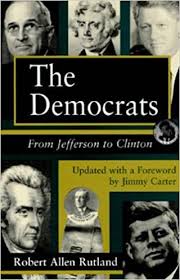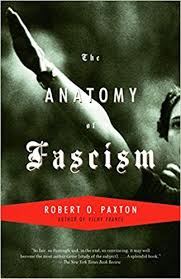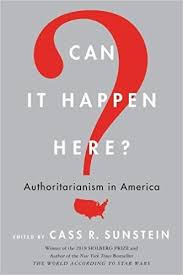Hi, Katrina,
The history of the two major parties is a little more complicated than that.
I can suggest a few good books (covers pictured in the next tweet).
If you’re not really into reading history books, I can offer a nifty history thread in under 25 tweets. https://twitter.com/KatrinaPierson/status/1091148881776259072">https://twitter.com/KatrinaPi...
The history of the two major parties is a little more complicated than that.
I can suggest a few good books (covers pictured in the next tweet).
If you’re not really into reading history books, I can offer a nifty history thread in under 25 tweets. https://twitter.com/KatrinaPierson/status/1091148881776259072">https://twitter.com/KatrinaPi...
1/ How Lincoln& #39;s anti-slavery, strong federal government pro-industry party morphed into the party of the Koch brothers & the KKK is a little complicated. But here we go.
During the Civil War, the Democratic Party was the pro-slavery party of the Confederacy & rural America.
During the Civil War, the Democratic Party was the pro-slavery party of the Confederacy & rural America.
2/ The Democrats wanted a limited federal government because they knew the North, if given the chance, would end slavery. Democrats vetoed federal funds for canals and highways because they understood such infrastructure
3/ Before the Civil War, Dems had disproportionate control over the federal government.
They had advantages in the electoral college (which favors rural states) & the 3/5 rule gave slaveowners disproportionate power in Congress.
The courts were packed with pro-slavery judges.
They had advantages in the electoral college (which favors rural states) & the 3/5 rule gave slaveowners disproportionate power in Congress.
The courts were packed with pro-slavery judges.
5/ In 1855 the Republican Party, the “Freedom Party,” was born as an anti-slavery, pro-industry, pro-federal government party.
Republicans wanted a strong federal government because industry needed roads, canals, etc. to thrive.
For that they needed federal legislation.
Republicans wanted a strong federal government because industry needed roads, canals, etc. to thrive.
For that they needed federal legislation.
6/Republicans gave us our first income tax.
After the Civil War and the crushing defeat of the South, the Rs had the power to pass pro-industry legislation. As a result, the industrial revolution boomed.
Now the nation’s wealthiest people were railroad and business executives.
After the Civil War and the crushing defeat of the South, the Rs had the power to pass pro-industry legislation. As a result, the industrial revolution boomed.
Now the nation’s wealthiest people were railroad and business executives.
5/ Income inequality opened up. Business tycoons got rich. Labor put in long weeks in dangerous jobs at poverty wages.
Note: When slaveowners had power, they voted to consolidate their power. Now industrialists did the same.
Sometimes (not always) people in power do that. https://abs.twimg.com/emoji/v2/... draggable="false" alt="🤷♀️" title="Woman shrugging" aria-label="Emoji: Woman shrugging">
https://abs.twimg.com/emoji/v2/... draggable="false" alt="🤷♀️" title="Woman shrugging" aria-label="Emoji: Woman shrugging">
Note: When slaveowners had power, they voted to consolidate their power. Now industrialists did the same.
Sometimes (not always) people in power do that.
6/States began segregating blacks & making it harder for them to vote (helped by the KKK) From Paxton https://abs.twimg.com/emoji/v2/... draggable="false" alt="👇" title="Down pointing backhand index" aria-label="Emoji: Down pointing backhand index">The world’s first fascist group was the KKK.
https://abs.twimg.com/emoji/v2/... draggable="false" alt="👇" title="Down pointing backhand index" aria-label="Emoji: Down pointing backhand index">The world’s first fascist group was the KKK.
The GOP, the party of industry and equality, split into to factions: The conservative pro-Industry part and liberal pro-labor part.
The GOP, the party of industry and equality, split into to factions: The conservative pro-Industry part and liberal pro-labor part.
7/ When SCOTUS upheld segregation and voter restrictions on blacks, the GOP dropped racial equality and labor issues from its platform and became the conservative party.
By 1920, Democratic Party base consisted of Southern whites, rural America, and laborers.
By 1920, Democratic Party base consisted of Southern whites, rural America, and laborers.
8/ Neither party championed racial equality: which ushered in a long period of relative harmony between the parties—they respected each other& #39;s "differences" because they weren& #39;t that different!
Both parties were basically ruled by white men.
Both parties were basically ruled by white men.
9/ In 1920, Harding (a Republican) won the presidency & immediately deregulated business and repealed taxes. More money poured into the hands of the wealthy. Banks freely lent too much money.
The gap between the wealthy and laborers widened further. Laborers had no protection.
The gap between the wealthy and laborers widened further. Laborers had no protection.
10/ Only the wealthy could attend college, etc. Then, in 1929, the market crashed & the Depression hit. Republican President Hoover felt the best solution was to do nothing on the grounds that government control was socialist and anti-American.
11/ Democrat FDR promised a New Deal: Protective legislation for laborers.
He drew blacks into the Democratic coalition, who liked his pro-labor stance They called themselves Roosevelt Democrats.
FDR gave us social security, minimum wage, a 40 hour workweek, etc.
@AOC
He drew blacks into the Democratic coalition, who liked his pro-labor stance They called themselves Roosevelt Democrats.
FDR gave us social security, minimum wage, a 40 hour workweek, etc.
@AOC
12/ The GOP fought against the New Deal, calling it socialism and a welfare state.
Dems said the economy recovered because of FDR& #39;s economic policies.
GOP said mobilizing for WWII strengthened the economy (but notice that mobilizing for war meant LOTS of government spending)
Dems said the economy recovered because of FDR& #39;s economic policies.
GOP said mobilizing for WWII strengthened the economy (but notice that mobilizing for war meant LOTS of government spending)
13/ The GOP wanted to repeal the New Deal.
Evangelicals, too, opposed government assistance: They didn’t want to elevate government over church. Problems, they believed, should be left to God.
https://www.playboy.com/read/in-billy-we-trust
The">https://www.playboy.com/read/in-b... culture was patriarchal & authoritarian. . .
@C_Stroop
Evangelicals, too, opposed government assistance: They didn’t want to elevate government over church. Problems, they believed, should be left to God.
https://www.playboy.com/read/in-billy-we-trust
The">https://www.playboy.com/read/in-b... culture was patriarchal & authoritarian. . .
@C_Stroop
14/ . . .women in the home, children must obey.
In 1954, Brown v. Board of Education (declaring racial segregation in schools unconstitutional) shocked much of the US.
People caught the drift. If schools could no longer be racially segregated, what about buses? Lunch counters?
In 1954, Brown v. Board of Education (declaring racial segregation in schools unconstitutional) shocked much of the US.
People caught the drift. If schools could no longer be racially segregated, what about buses? Lunch counters?
15/ Those opposed to Civil Rights (and the Brown decision) used the same argument as the Confederacy: Federal courts had no business interfering. States should be free to decide. SCOTUS overreached.
Tensions arose when the federal government enforced the no segregation rule.
Tensions arose when the federal government enforced the no segregation rule.
16/ Liberals celebrated the cultural changes & growing diversity of the 50s and 60s—the women’s and civil rights movements.
The changes alarmed the far right, igniting a powerful backlash,
Another movement arose that also despised all government regulations: Libertarianism.
The changes alarmed the far right, igniting a powerful backlash,
Another movement arose that also despised all government regulations: Libertarianism.
17/ Libertarians, the KKK, and Birchers, evangelicals found themselves with a common goal: Dismantle the federal government. Return to 1920.
The NRA became a radicalized right wing group. Before the 1970s, hunters and gun enthusiasts were members of both political parties.
The NRA became a radicalized right wing group. Before the 1970s, hunters and gun enthusiasts were members of both political parties.
18/ NRA undertook a legal and propaganda campaign persuading conservatives that liberty meant unfettered access to guns.
Meanwhile the GOP devised a way to expand its base & bring the white South into the GOP, "The Southern Strategy”. . .
Meanwhile the GOP devised a way to expand its base & bring the white South into the GOP, "The Southern Strategy”. . .
19/ To lure the South and rural America, Nixon talked about being “tough on crime” (code for putting black men in jail). Reagan talked about “welfare queens.”
What happened next in a nutshell: The authoritarians grew increasingly powerful & took over the party.
What happened next in a nutshell: The authoritarians grew increasingly powerful & took over the party.
20/ Before you can really understand what happened, you need to know something about authoritarians v conservatives. https://twitter.com/Teri_Kanefield/status/1037366136340271104
See,">https://twitter.com/Teri_Kane... @KatrinaPierson I told you it gets a little complicated.
See,">https://twitter.com/Teri_Kane... @KatrinaPierson I told you it gets a little complicated.
21/ Before the Southern Strategy, authoritarians were spread out over both parties. Afterward, the major authoritarian groups came to be concentrated in the GOP.
This made the GOP very dangerous. Because authoritarians are by nature opposed to democracy. They can also be cruel.
This made the GOP very dangerous. Because authoritarians are by nature opposed to democracy. They can also be cruel.
22/ An excellent explanation for what is happening to the US was described by Haidt and Stenner in their essay “Authoritarianism is Not a Momentary Madness, but an Eternal Dynamic within Liberal Democracies" which appeared in this book  https://abs.twimg.com/emoji/v2/... draggable="false" alt="👇" title="Down pointing backhand index" aria-label="Emoji: Down pointing backhand index">
https://abs.twimg.com/emoji/v2/... draggable="false" alt="👇" title="Down pointing backhand index" aria-label="Emoji: Down pointing backhand index">
23/ It& #39;s a complicated essay, but no worries! I summarized it, starting here https://abs.twimg.com/emoji/v2/... draggable="false" alt="👇" title="Down pointing backhand index" aria-label="Emoji: Down pointing backhand index">
https://abs.twimg.com/emoji/v2/... draggable="false" alt="👇" title="Down pointing backhand index" aria-label="Emoji: Down pointing backhand index">
Basically, America is having an authoritarian moment.
We& #39;re caught in an authoritarian dynamic.
https://twitter.com/Teri_Kanefield/status/1027188994616918017
I">https://twitter.com/Teri_Kane... hope this explanation helps clear up the confusion, @KatrinaPierson
Basically, America is having an authoritarian moment.
We& #39;re caught in an authoritarian dynamic.
https://twitter.com/Teri_Kanefield/status/1027188994616918017
I">https://twitter.com/Teri_Kane... hope this explanation helps clear up the confusion, @KatrinaPierson
Adding: Here& #39;s a better summary of @JonHaidt and Stenner& #39;s essay: https://twitter.com/Teri_Kanefield/status/1007653323065839617">https://twitter.com/Teri_Kane...
All of my Twitter threads are now blog posts. You can see this one here: https://terikanefield-blog.com/in-which-i-respond-to-a-senior-trump-advisor/
(I">https://terikanefield-blog.com/in-which-... have all my threads categorized; some of them double as research for my books.)
(I">https://terikanefield-blog.com/in-which-... have all my threads categorized; some of them double as research for my books.)
Apologies for the error in Tweet #2. https://twitter.com/patrickesnyder/status/1131600386928861184
The">https://twitter.com/patrickes... sentence should read:
Democrats vetoed federal funds for canals and highways because they understood such infrastructure would benefit the industrial North.
The">https://twitter.com/patrickes... sentence should read:
Democrats vetoed federal funds for canals and highways because they understood such infrastructure would benefit the industrial North.

 Read on Twitter
Read on Twitter


 The world’s first fascist group was the KKK.The GOP, the party of industry and equality, split into to factions: The conservative pro-Industry part and liberal pro-labor part." title="6/States began segregating blacks & making it harder for them to vote (helped by the KKK) From Paxtonhttps://abs.twimg.com/emoji/v2/... draggable="false" alt="👇" title="Down pointing backhand index" aria-label="Emoji: Down pointing backhand index">The world’s first fascist group was the KKK.The GOP, the party of industry and equality, split into to factions: The conservative pro-Industry part and liberal pro-labor part." class="img-responsive" style="max-width:100%;"/>
The world’s first fascist group was the KKK.The GOP, the party of industry and equality, split into to factions: The conservative pro-Industry part and liberal pro-labor part." title="6/States began segregating blacks & making it harder for them to vote (helped by the KKK) From Paxtonhttps://abs.twimg.com/emoji/v2/... draggable="false" alt="👇" title="Down pointing backhand index" aria-label="Emoji: Down pointing backhand index">The world’s first fascist group was the KKK.The GOP, the party of industry and equality, split into to factions: The conservative pro-Industry part and liberal pro-labor part." class="img-responsive" style="max-width:100%;"/>
 " title="22/ An excellent explanation for what is happening to the US was described by Haidt and Stenner in their essay “Authoritarianism is Not a Momentary Madness, but an Eternal Dynamic within Liberal Democracies" which appeared in this book https://abs.twimg.com/emoji/v2/... draggable="false" alt="👇" title="Down pointing backhand index" aria-label="Emoji: Down pointing backhand index">" class="img-responsive" style="max-width:100%;"/>
" title="22/ An excellent explanation for what is happening to the US was described by Haidt and Stenner in their essay “Authoritarianism is Not a Momentary Madness, but an Eternal Dynamic within Liberal Democracies" which appeared in this book https://abs.twimg.com/emoji/v2/... draggable="false" alt="👇" title="Down pointing backhand index" aria-label="Emoji: Down pointing backhand index">" class="img-responsive" style="max-width:100%;"/>


